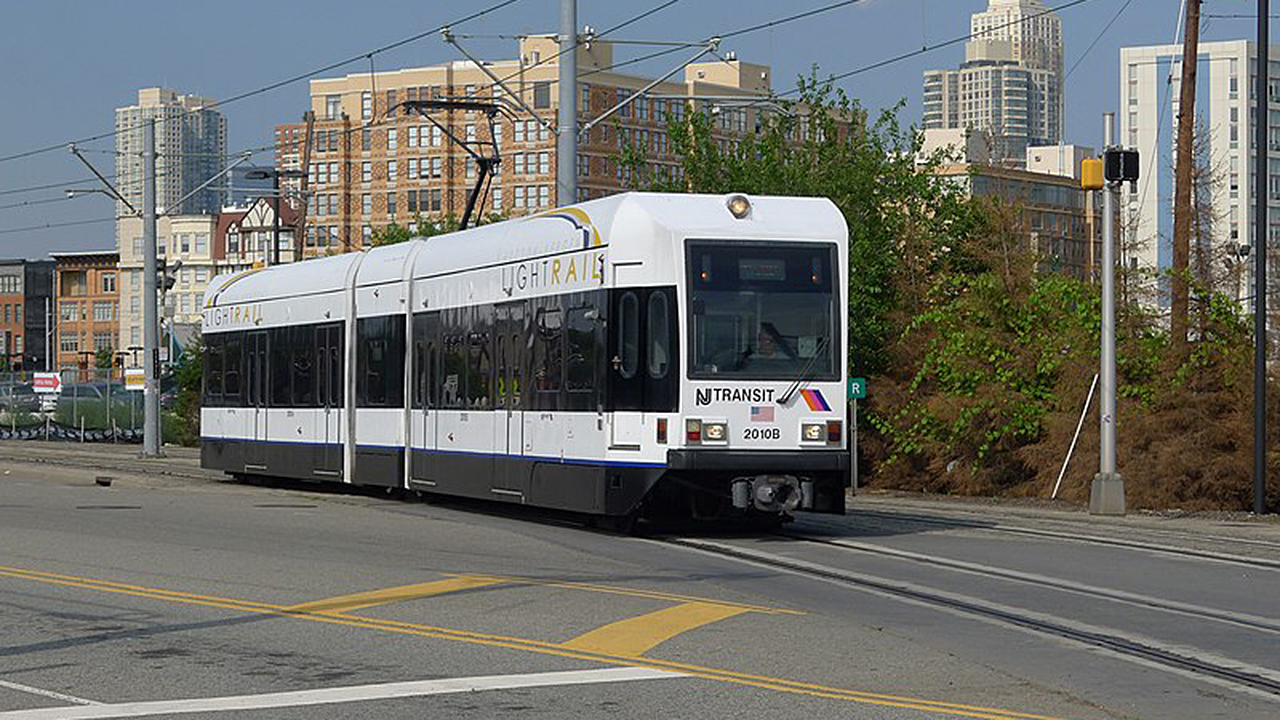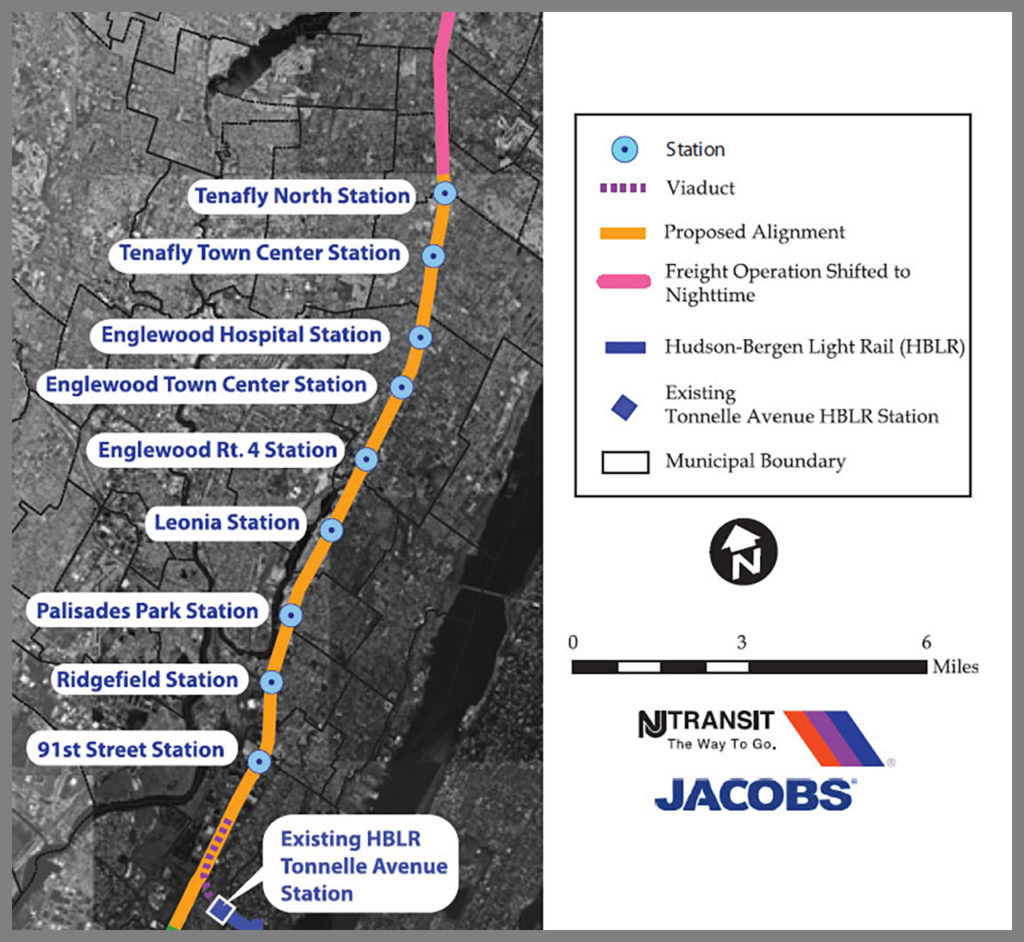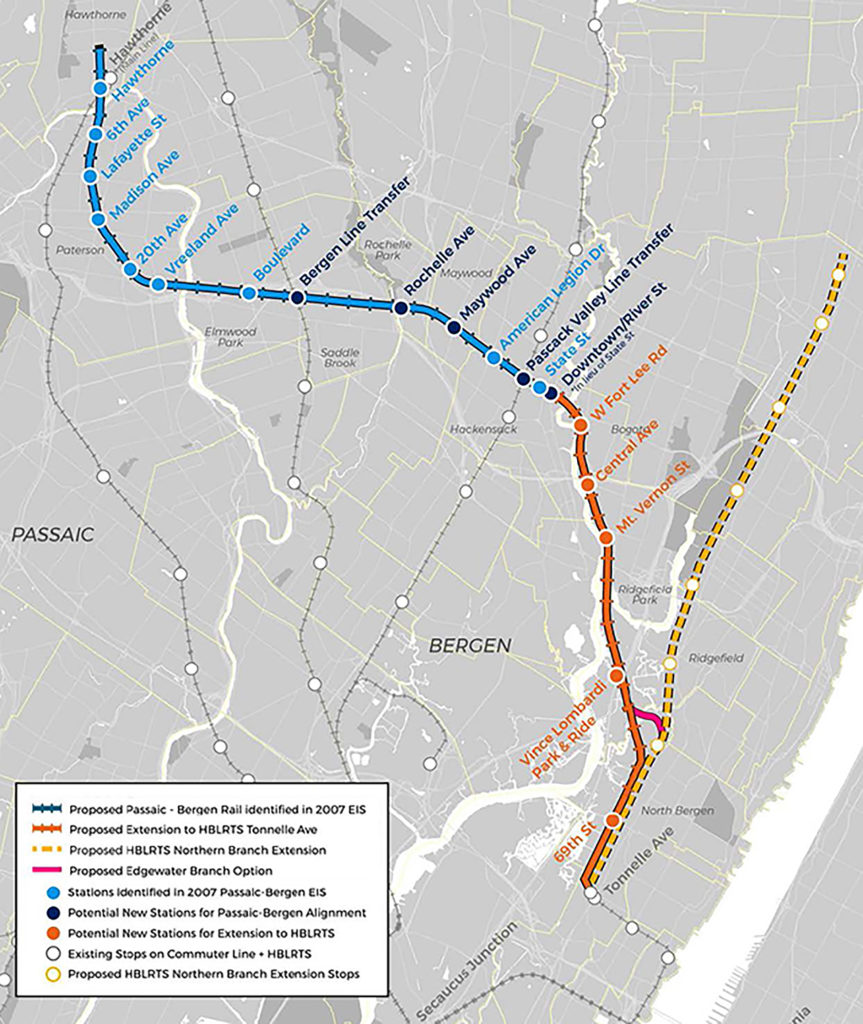
FTA Throws Another Monkey Wrench into NJT HBLR Extension
Written by Jennifer McLawhorn, Managing Editor, Railway Track & Structures
Wikimedia Commons/King of Hearts
The Federal Transit Administration is rescinding a Notice of Intent (NOI) to prepare an Environmental Impact Statement (EIS) for New Jersey Transit’s Northern Branch Corridor Project, an extension of Hudson-Bergen Light Rail (HBLR).
The NOI, which dates back to October 2007, involves “a previous proposal for the Restoration of Rail Service in the Northern Branch Corridor Project from North Bergen to Englewood in Hudson and Bergen Counties, New Jersey.” Six years ago, the FTA and NJ Transit published The NOI in the Federal Register to prepare an EIS to study passenger service restoration on the branch between North Bergen in Hudson County and Englewood in Bergen County.
After reviewing the project, FTA has rescinded the NOI because, it said, “of changes to the project design and environmental impacts in the following areas: floodplains, stormwater management, cultural resources, hazardous materials, traffic and parking, and air quality, all of which have occurred since 2007.”

Northjersey.com reported that FTA’s move has made local lawmakers “furious” as there is now another delay in the HBLR extension into Bergen County. The project is now delayed “at least two more years.” . New Jersey Assemblywoman Shama Haider (D-37th District) commented, “We are asking them to build a few miles of railroad extension to serve 100,000 commuters in our district, in Bergen County. How long as the United States been building railroads? Nearly 200 years. … Studies were done way back when and done again and updated again … NJ Transit has done [an] update [as asked by the FTA], [which] pushed the time further … We’ve gone through hoops to get them all the information they have.”
According to Northjersey.com, Haider has been working on the expansion into Bergen since 2021 and has been “sending letters to NJ Transit officials for updates and calling into the agency’s monthly board meetings to keep the project top-of-mind.”
Other Bergen County officials commented on their frustration, saying that “New Jersey Transit, the Federal Transit Administration, and others [should] step up and commit the immediate funding required to keep this project on track … We cannot afford to let bureaucracy and indecision derail the progress that our residents need.”

The decision to rescind the NOI is surprising because it was only earlier this year that “NJ Transit officials assured lawmakers inquiring about the project that the agency planned to send up dated information later this year for its first environmental report, first submitted to the FTA in 2018,” Northjersey.com reported. “In April, the FTA had said it paused the environmental review because there was no ‘financial commitment.’”
Rep. Josh Gottheimer (D-N.J.), whose district would be the last stop on the Bergen extension, called the move from the FTA a “double standard” and that “NJ Transit already submitted a full environmental impact statement. But now, at the last minute, the USDOT wants them to do it again.” The “double standard” refers to a congestion pricing plan proposed by the New York MTA that would charge a toll to drivers who enter Manhattan below 60th Street—a move that was approved without an environmental review “despite preliminary findings showing that it will increase carcinogen-filled air pollution in Jersey.”
Now, the plans and construction timelines for the HBLR extension into Bergen County will need to be redone. NJ Transit spokesman Jim Smith told Northjersey.com the agency has directed its consultant, Jacobs Engineering, to begin “immediately developing a new scope of work and updated construction and completion timelines” for the HBLR extension into Bergen County. “Fortunately, much of the information in the original SDEIS (Supplemental Draft Environmental Impact Statement) is still relevant and can be used as a starting point in a new EIS process,“ he said. ”The process, which should take about 24 months once started, will reevaluate existing conditions, including flood plain and resiliency mitigation, project alignment and public engagement. While that timeline estimate is very preliminary at this point in the process, we continue exploring all potential avenues, including constructing the extension in phases, while identifying funding options such as the Infrastructure Investment and Jobs Act of 2021 to advance this critical project.”
Editor’s Comment: Bureaucracy appears to have no limits at the FTA and other U.S. Government agencies. — William C. Vantuono



